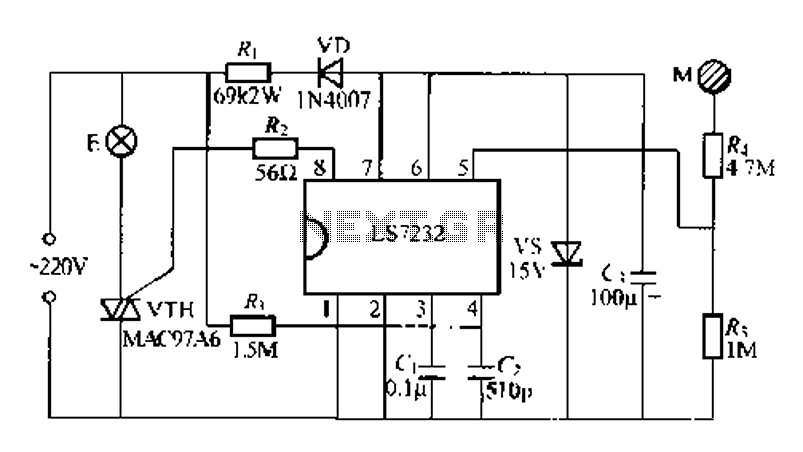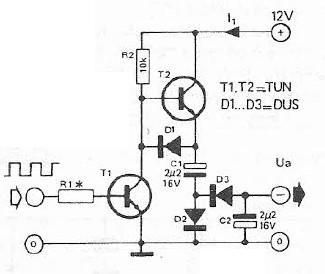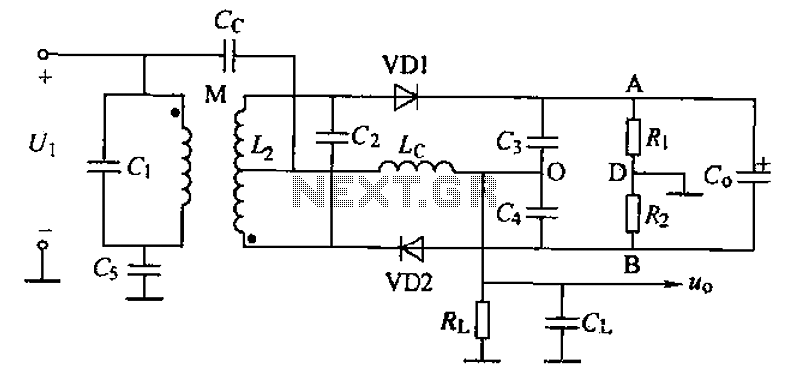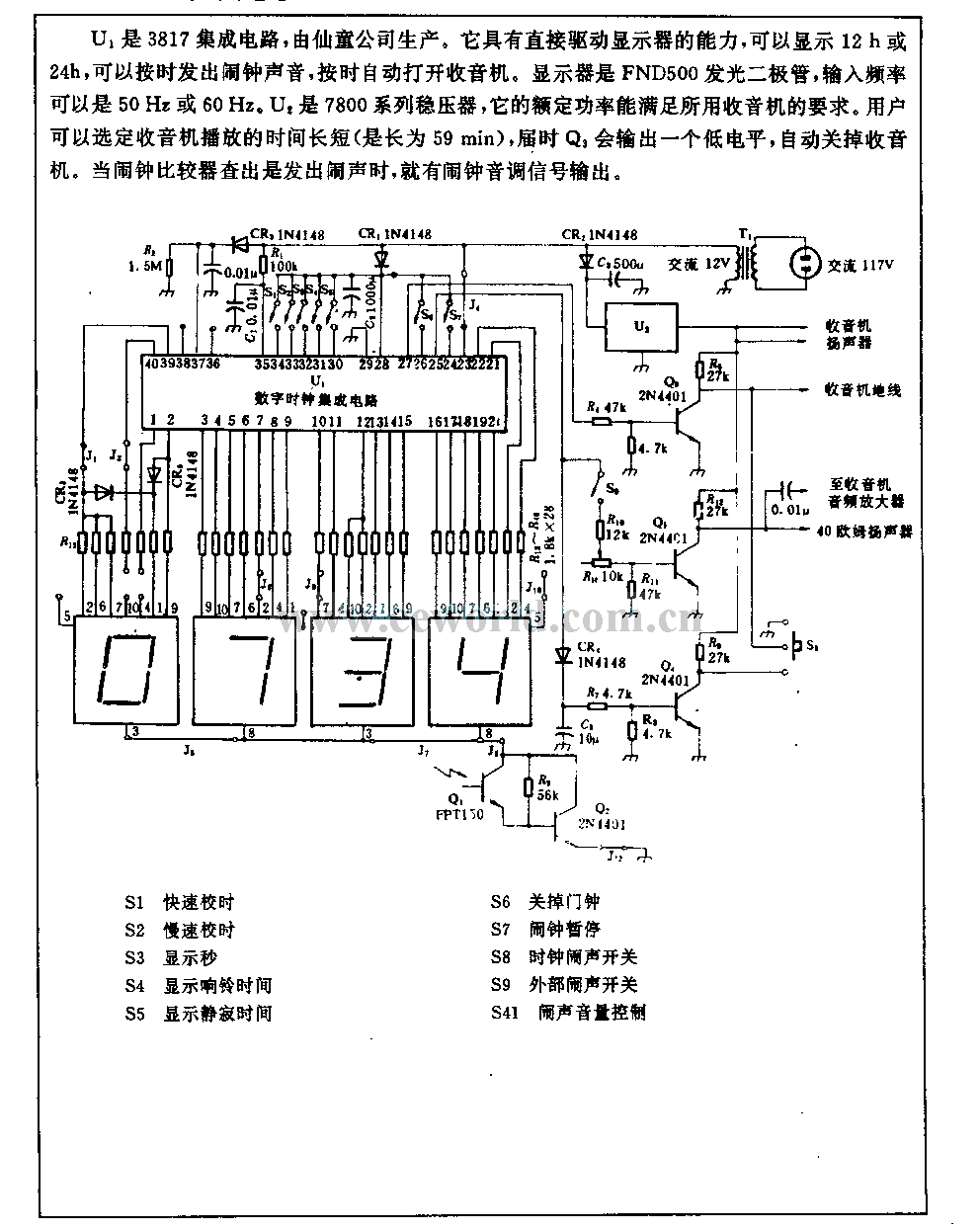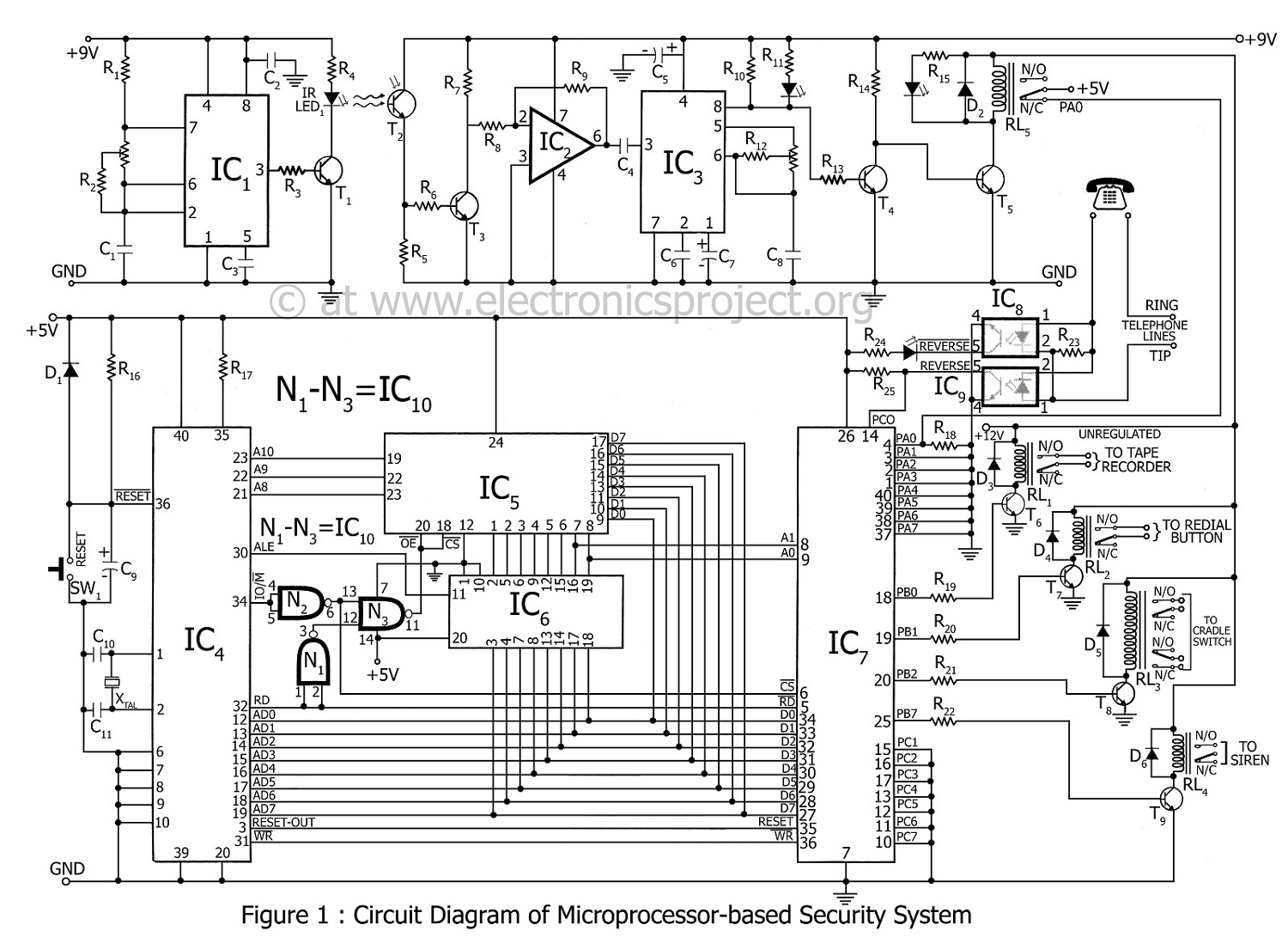
Joulethief SEC exciter circuit

A 1N4148 diode and a 1-megohm resistor are included in the circuit. The inquiry pertains to how to power LED(s) using a 1.5-volt battery. There is also a question regarding the role of an additional coil, L3, and its effect on the circuit. Previous information suggests that L3 may be utilized with an exciter in certain configurations.
To power LED(s) from a 1.5-volt battery using a 1N4148 diode and a 1-megohm resistor, the circuit can be designed to ensure that the forward voltage drop across the diode does not exceed the available voltage. The 1N4148 diode is a standard silicon switching diode with a forward voltage drop of approximately 0.7 volts. This means that when connected in series with the LED, the combined voltage drop across the diode and the LED must be less than or equal to the battery voltage.
Assuming the LED has a forward voltage drop of about 2 volts, direct connection to a 1.5-volt battery will not suffice to turn it on. However, the inclusion of the 1-megohm resistor in the circuit can serve as a current-limiting component to protect the LED from excessive current, but it is important to note that it will not increase the voltage supplied to the LED.
The coil L3's role in this circuit may involve inductive coupling or energy storage, which can be leveraged to create a higher voltage pulse through a switching mechanism, such as a transistor or an oscillator circuit. When L3 is energized, it can store energy in its magnetic field and release it when the current through it is interrupted. This behavior is often utilized in exciter circuits to generate higher voltages from low-voltage sources.
In summary, while the 1.5-volt battery alone may not directly light an LED with a forward voltage requirement of 2 volts, the addition of L3 could allow for a configuration that boosts the voltage through inductive effects, enabling the LED to operate effectively within the circuit. Proper design considerations should be made to ensure that all components are rated for the expected voltages and currents in the circuit.You are now showing a 1n4148 diode, and a 1 meg resistor. My question is: How can you can light the led(s) off of a 1.5 volt battery. That additional coil L3, I am not sure how it affects the circuit. I remember reading, or watching Utube videos, where L3 was used with exciter. 🔗 External reference
To power LED(s) from a 1.5-volt battery using a 1N4148 diode and a 1-megohm resistor, the circuit can be designed to ensure that the forward voltage drop across the diode does not exceed the available voltage. The 1N4148 diode is a standard silicon switching diode with a forward voltage drop of approximately 0.7 volts. This means that when connected in series with the LED, the combined voltage drop across the diode and the LED must be less than or equal to the battery voltage.
Assuming the LED has a forward voltage drop of about 2 volts, direct connection to a 1.5-volt battery will not suffice to turn it on. However, the inclusion of the 1-megohm resistor in the circuit can serve as a current-limiting component to protect the LED from excessive current, but it is important to note that it will not increase the voltage supplied to the LED.
The coil L3's role in this circuit may involve inductive coupling or energy storage, which can be leveraged to create a higher voltage pulse through a switching mechanism, such as a transistor or an oscillator circuit. When L3 is energized, it can store energy in its magnetic field and release it when the current through it is interrupted. This behavior is often utilized in exciter circuits to generate higher voltages from low-voltage sources.
In summary, while the 1.5-volt battery alone may not directly light an LED with a forward voltage requirement of 2 volts, the addition of L3 could allow for a configuration that boosts the voltage through inductive effects, enabling the LED to operate effectively within the circuit. Proper design considerations should be made to ensure that all components are rated for the expected voltages and currents in the circuit.You are now showing a 1n4148 diode, and a 1 meg resistor. My question is: How can you can light the led(s) off of a 1.5 volt battery. That additional coil L3, I am not sure how it affects the circuit. I remember reading, or watching Utube videos, where L3 was used with exciter. 🔗 External reference
